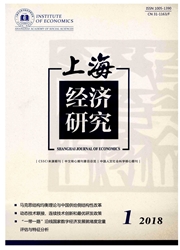

 中文摘要:
中文摘要:
本文以新凯恩斯主义菲利普斯曲线理论为基础,研究房价波动对物价波动的影响关系。利用2005年7月~2013年9月的经济运行数据建立了三组不同期间的门限面板模型,分析房价冲击对物价波动的分区制影响,并探讨二者在长时期中共同变化趋势的特征。本文的主要结论为:首先,房价对通货膨胀的影响,不同时期有较大差异,金融危机之后低增速与中等增速区制的房价指数系数均低于金融危机之前的房价指数系数,其差距明显。据此应当认为,在金融危机之前,一旦房价在短期出现反弹,这种价格浮动趋向就会在2期后影响通货膨胀水平,而金融危机之后这种影响就小很多,而且滞后期也变长了,变为5期后才影响通货膨胀率。其次,随着结构变化,2009年以后,房价对物价波动的关联动态出现了短期背离现象,而“稳增长”和“抑房价”两项政策的宏观经济调节目标不尽相同则是上述现象的关键成因。
 英文摘要:
英文摘要:
Based on the "inflation-output" relation identified by the New Keynesian Philips Curve (NKPC), and macroeconomic data of China, which ranges from 2005/07 to 2013/09, three time- distinguished threshold panel data models are employed to explore the connection of housing-price-to- price-level variation and their regime effects. Traits of Co-movement between housing price to price level in the long term are also discussed. The main conclusions are as follows. Firstly, from change in output- gap structure, we know that China's economy suffered a decrease in potential production rate after the two financial crisis, which means there might be a permanent NKPC-oriented transformation on the economy. Secondly, as the structure of inflation-output relation changes, the short-termed modes of housing price explaining price level variation mismatch after the year of 2009. Moreover, collision of "economic growth stabilization" and "real estate price suppression" destination is the main cause for that phenomenon.
 同期刊论文项目
同期刊论文项目
 同项目期刊论文
同项目期刊论文
 期刊信息
期刊信息
